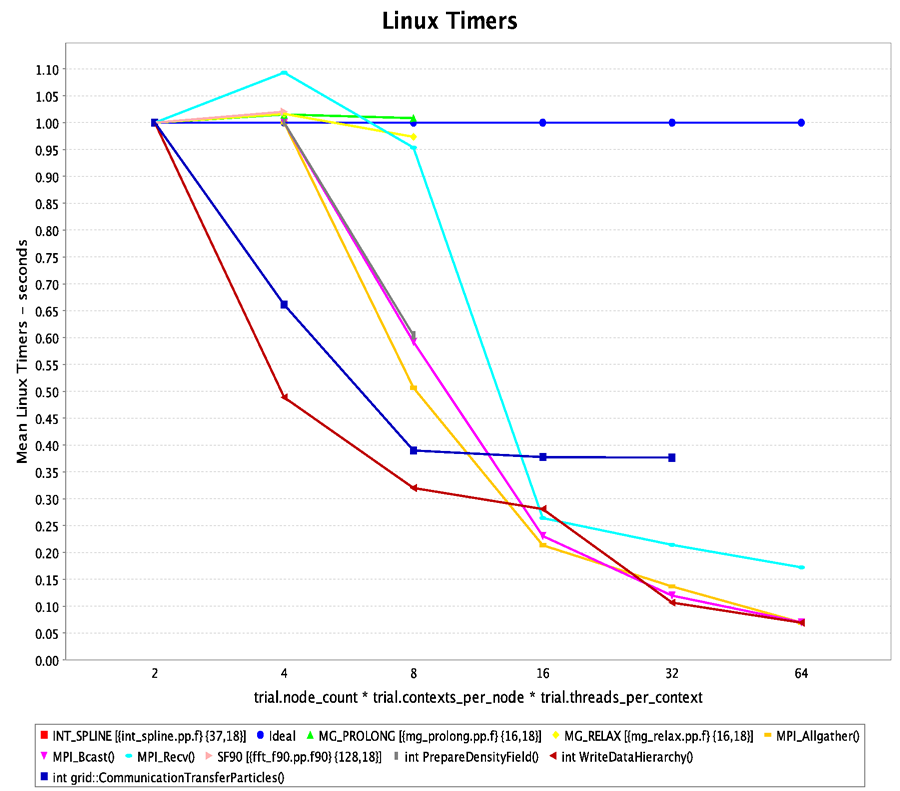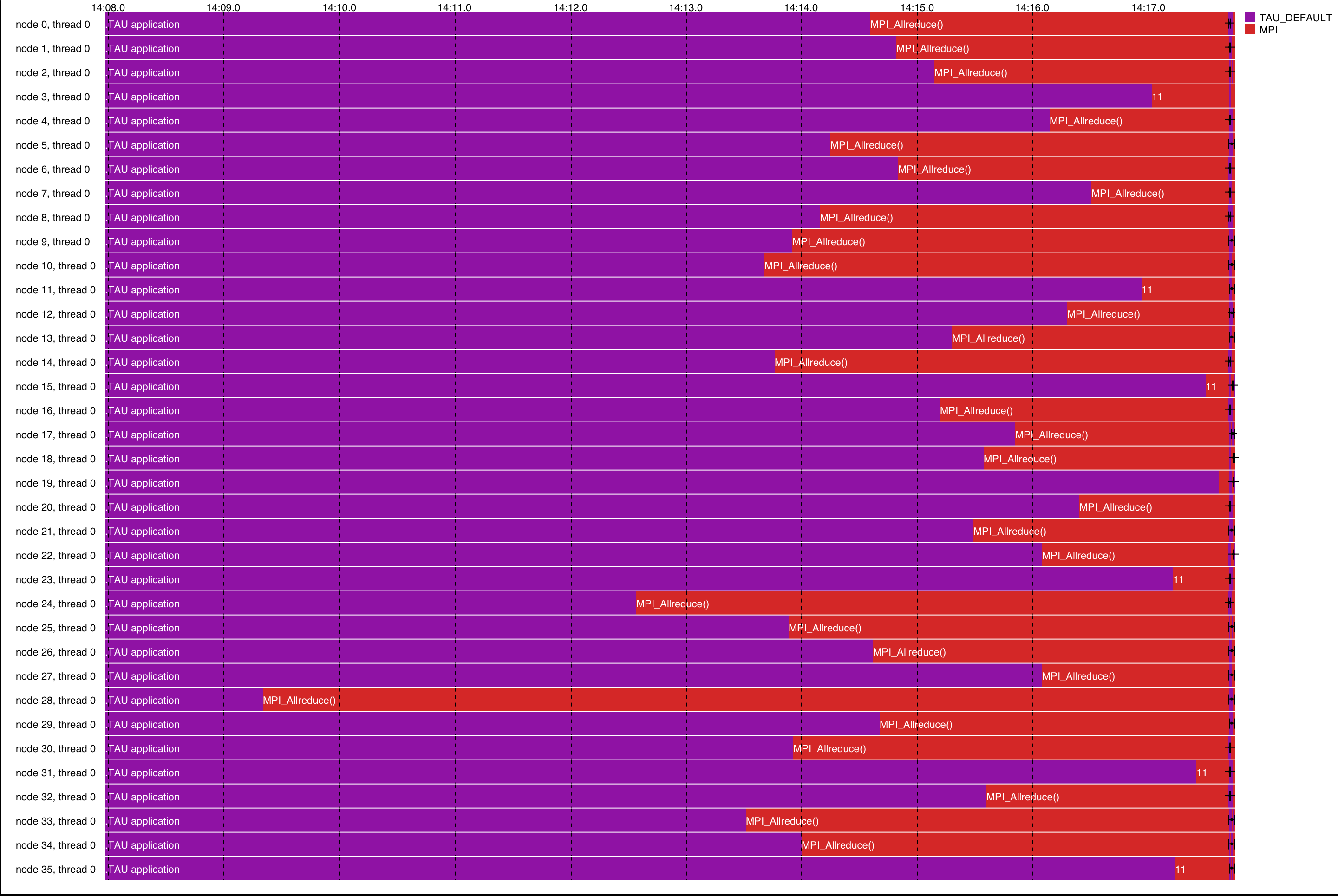Difference between revisions of "ENZO"
| Line 1: | Line 1: | ||
=ENZO Performance Study Summary= | =ENZO Performance Study Summary= | ||
| − | This is a short overview | + | This is a short overview of the performance result from the ENZO application. For each experiment we used these inits/param files: |
* [http://giusto.nic.uoregon.edu/~scottb/SingleGrid_dmonly.inits inits] | * [http://giusto.nic.uoregon.edu/~scottb/SingleGrid_dmonly.inits inits] | ||
* [http://giusto.nic.uoregon.edu/~scottb/SingleGrid_dmonly_amr.param param] | * [http://giusto.nic.uoregon.edu/~scottb/SingleGrid_dmonly_amr.param param] | ||
| − | This is a relatively small experiment but was | + | This is a relatively small experiment but was sufficient to generate some interesting performance results. For this study we used the [http://tau.uoregon.edu TAU Performance System®] to gather information about ENZO's performance, in particular we are interested in the performance of the AMR simulation at scale. We ran these experiments on NCSA's Intel 64 Linux Cluster (Abe). |
==TAU Measurement overhead== | ==TAU Measurement overhead== | ||
| Line 51: | Line 51: | ||
==Experiment Trace== | ==Experiment Trace== | ||
| − | This graphic shows how load imbalances | + | This graphic shows how load imbalances causes long wait times for MPI_Allreduce. Some processors are experiencing as much as 8 seconds of wait time per reduce. |
[[Image:trace.png|1000px]] | [[Image:trace.png|1000px]] | ||
Revision as of 23:44, 15 May 2008
Contents
ENZO Performance Study Summary
This is a short overview of the performance result from the ENZO application. For each experiment we used these inits/param files:
This is a relatively small experiment but was sufficient to generate some interesting performance results. For this study we used the TAU Performance System® to gather information about ENZO's performance, in particular we are interested in the performance of the AMR simulation at scale. We ran these experiments on NCSA's Intel 64 Linux Cluster (Abe).
TAU Measurement overhead
Here is a short table listing the run-times for various experiments and the instrumentation overhead observed. Each run was on 64 processors (8 nodes).
| Run Type | Runtime (seconds) | Overhead % |
|---|---|---|
| Uninstrumented runtime | 1072 | NA |
| Trace of only MPI event | 1085 | 4.8% |
| Profile of all significant events | 1136 | 6.0% |
| Profile with Call-path information | 1196 | 11.6% |
| Profile of each Phase of execution | 1208 | 12.7% |
Runtime Breakdown on 64 processors
Here is a chart showing the contribution each function makes to the overall runtime. Notice that MPI communication time takes over 60% of the total runtime.
Experiment Scalability
Given the amount of time spend in MPI communications we do not expect this experiment to scale well. This chart shows that MPI communication time continues to dominate the runtime to an even greater extent at scale.
Experiment Trace
This graphic shows how load imbalances causes long wait times for MPI_Allreduce. Some processors are experiencing as much as 8 seconds of wait time per reduce.
Experiment Call-Paths
We observe the follow relationships in the experiment callpath:
- Almost all the time spend in MPI_Bcast is when it is called from MPI_Allreduce.
- Almost all the time spend in MPI_Recv is when it is called from grid::CommunicationSendRegion.
- Most all the time spend in MPI_Allgather is when it is called from CommunicationShareGrids.
- Almost all the time spend in MPI_Allreduce is when it is called from CommunicationMinValue.
This chart show the details:



